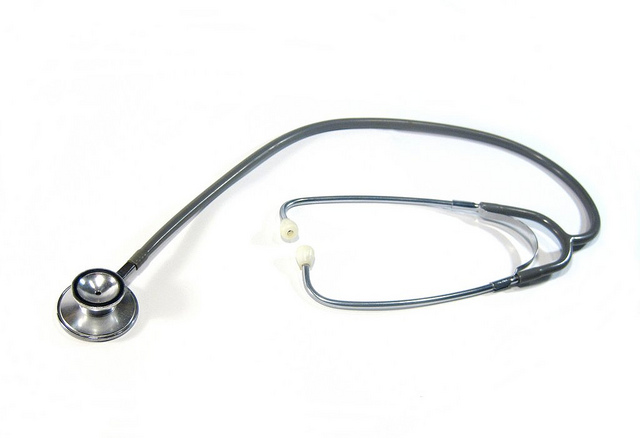

Orange County has gotten an early start on healthcare reform with a pilot program testing a new approach to care for the low-income and uninsured in three clinics.
The Coalition of Orange County Community Clinics (COCCC) is piloting a program for patient-centered care with UCI Family Health Center, Serve the People and The Vietnamese Community of Orange County’s Asian Health Center clinics. The initiative’s goal is for local safety-net providers and local health plans to partner together to coordinate care for their patients.
The coalition will adopt the “medical home” model, which uses an integrated team of clinical and administrative staff to manage a patient’s care in one office, or “home.” Together, the team maintains an ongoing relationship with the patient and ensures that all specialist visits, testing and procedures beyond their office are arranged and completed. The idea is that such care will prevent illnesses from becoming worse and ultimately reduce costs.
The pilot program includes two hundred complex, high-risk patients ages eighteen and over with at least one chronic condition, ranging from diabetes to mental illness, who are insured by CalOptima, the county insurance program that serves the low-income and disabled. Once the pilot is tested and completed, it will expand to all of the patients at the three clinics.
Medical homes – the idea of having all of a patient’s health needs coordinated in one place – put a much greater emphasis on continuum of care, said COCCC Chief Executive Isabel Becerra.
”We are revamping the way we provide care to patients, from how to register them, to services we make available to them, to how we coordinate care after their departure,” said Becerra. “Normally in clinics serving the indigent, patients may wait around several hours for a fifteen minute appointment. Now there will be an interdisciplinary team working to get five patients or so in and out per hour, while not compromising quality of care.”
New administrative roles, including patient navigators, will help clinics meet such ambitious goals. Patient navigators will keep records of patient encounters, linking them from one service provider to another. Navigators also connect patients with pharmacies and specialists and ensure that the doctor’s recommendations are carried out.
Helping the chronically ill better manage their conditions may be the best way to reduce spending on health care. “We want the savings to be greatest for the sickest,” said Maryan Ryan of Health Teamwork, who is spearheading the project along with Becerra. CalOptima data will allow them to track costs and savings that result from the program, Ryan said.
Funding remains a challenge despite $500,000 in grants the coalition received from non-profit foundations, but Becerra says the journey to reform has to start somewhere.
Both Ryan and Becerra have learned that sustainable change means all necessary components of the new system, not the least of which are the staffing requirements, must be in place in order for it to work.
The Patient Navigator position, for example, was not funded until July 1. This position was indispensable, Ryan said, as the pilot program calls for a primary care team with individual, standardized functions.
“The Patient Navigator role typically is not funded in most clinics, and they operate so leanly that it makes being a medical home extremely difficult,” Ryan said.
One change Ryan and Becerra want to see embraced completely before these clinics can operate as medical homes is also probably the biggest shift: the changing roles of both clinical and administrative staff.
“One of the biggest obstacles so far is getting physicians to let others assume some of the accountability,” Ryan said.
A simple, but overlooked example of this is gathering medical history, Ryan said.
“It’s considered a passive activity. There’s nothing in medical licensure saying they [physicians] have to do that. A well-trained medical assistant can do this, so that when a physician enters, they can ask questions and go on to do diagnostic exams that only they are qualified to do,” Ryan said.
UCI Family Health Center’s Clinic Director Dirk Zirbel, who is currently coordinating the training of his staff in their various new roles, says there are a number of reasons why the change to patient-centered care is long overdue.
“With this patient base, especially, we regularly deal with quite a few who don’t speak English,” Zirbel said. “It’s confusing for anyone, especially for a population that maybe isn’t as accustomed to the whole referral-based way of doing things.”
Because of the language barrier, Zirbel says, the importance of following up on a specialist referral can be lost on patients.
“Nothing is more frustrating to our doctors than asking a patient if they got that test done, and find out they did not,” Zirbel said. Failure to follow-up also results in unnecessary spending, he added, noting that the referral process is started again in such cases.
Though change to patient centered care is a change from business as usual, the accountability built into a patient-centered medical home is also a boon to doctors, giving them more peace of mind, Zirbel said.
“I’ve gone through medical audits, they [Medi-Cal] ask you how you know that person you sent off for weight reduction actually went,” Zirbel says. “It will be good to just close that loop.”






You must be logged in to post a comment.